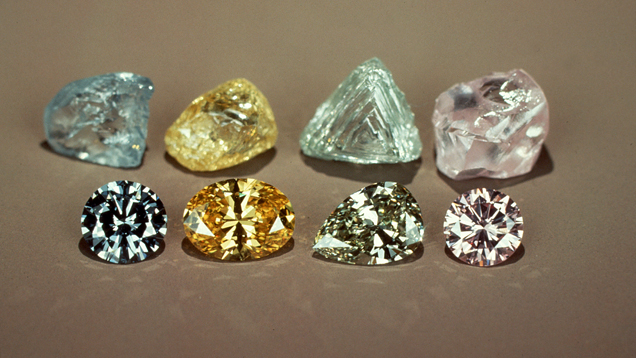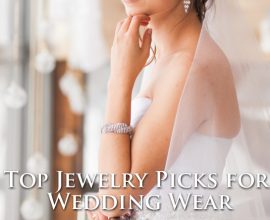“Brilliant colors…all are found enclosed in a morsel of pure carbon.”
Author Charles Blanc said that about diamonds. Diamonds are pure carbon, created under intense heat and extreme pressure. The weight of the world, literally, pressed down upon carbon until she spat out a diamond. And while most people think of the brilliant, fiery white diamonds, which are the most common stone used in bridal jewelry and other status jewelry pieces, diamonds come in a variety of colors. Blues, violets, and reds fetch the highest price, but they are quite rare (with red being the most rare). Fancy yellow and pink diamonds are very popular as well, and far more accessible. Diamonds, although all carbon, occur in so many different colors because of the chemicals included in them during their formation. For example, violet diamonds indicate a high level of hydrogen. Gemologists and other scientists can gain a lot of insight in environments based on the diamond variants found.
From a practical jewelry standpoint, color of a diamond, whether blue, red, pink, or white, is critical to assessing its value. The Gemological Institute of America (GIA) uses a standardized scale to grade a diamond’s color. Focusing on white diamonds, since they are what are most often used, the color scale follows the alphabet, from D to Z. It may seem bizarre that the color scale starts at D, but there is a very specific reason for it. Before this universal system came into use, gem graders all over the world used local systems, which could have been “A, B, C” or “1, 2, 3” or descriptions like “gem blue.” With no clear standards for these grades and no consensus across locales, diamond color grading was all over the map (both literally and figuratively). When the GIA introduced the most commonly used grading system (the D to Z scale), they wanted to minimize any confusion with any previously or currently used scale. Thus, they used the modern English alphabet starting with the letter “D”, since A, B, and C had been used in previous, non-universal diamond color grading scales.
The modern GIA color scale is used to grade the colors of white diamonds. White diamonds, as their color quality descends, will exhibit an increasing deep yellow or brown tint. Once these tints take the diamond beyond the color grade Z, they are moved into the “fancy color” categories and then have their own color grading scale specific to their colors. Colors D, E, and F are considered colorless; they will have no discernible color tint. They will be absolute white. Colors G through J are considered nearly colorless. Beyond J, the yellow tint is pretty noticeable and therefore, diamonds beyond J are not often used in jewelry. Most diamonds in jewelry will be between F and H. D, E, and F diamonds are more often used as center stones in engagement rings over I or J color stones. The reason for this is that these stones are generally larger than what usually appear in other pieces of jewelry and they command a lot of attention. With such a prominent position, a higher quality (in terms of color) stone is selected.

Fancy Colored Rough and Faceted Diamonds
In order to grade a stone for certification, an expert gemologist will assess the diamond in a very tightly controlled and maintained light box which replicates daylight. The loose stone (a loose stone is a diamond that is not set in a piece of jewelry) is placed on its table (the large, flat facet on the very top of the diamond), with its pavilion (the pointy tapered part of the diamond) pointing up. Next to it, a masterstone is placed. The masterstones are of a known color. The diamonds are compared until a match is found. At this point, the grader can determine the color of the subject stone. For stones that are set in jewelry, there is a separate grading process. Because the color cannot be exactly determined, these stones are often given a range of colors as the grade.
The color grading process is very precise. A good jeweler, like Andre’s Fine Jewelers, can provide a solid assessment of a diamond’s color if you have a diamond that is not certified. To talk to one of the diamond experts at Andre’s Fine Jewelers, please call 810-225-1414 or visit the downtown Brighton, MI showroom.





